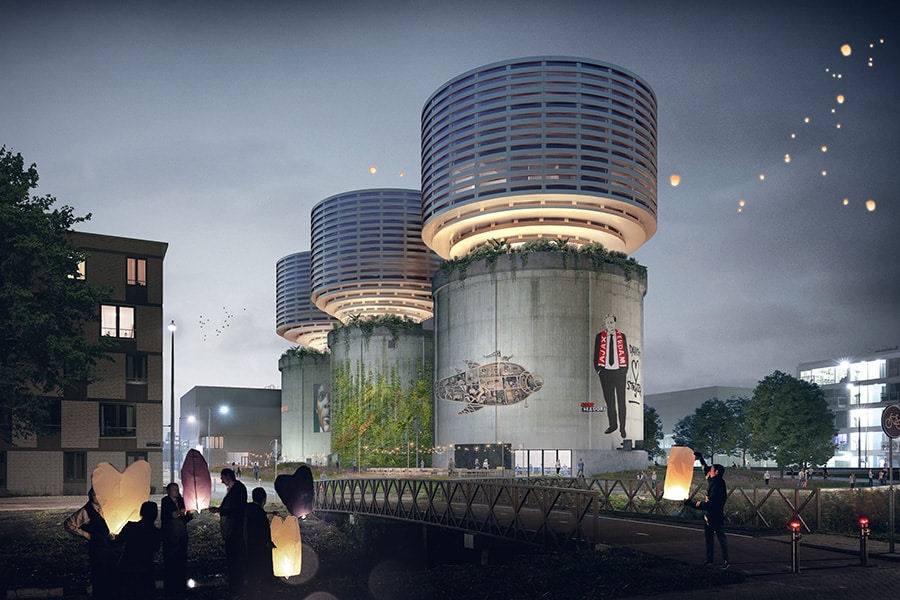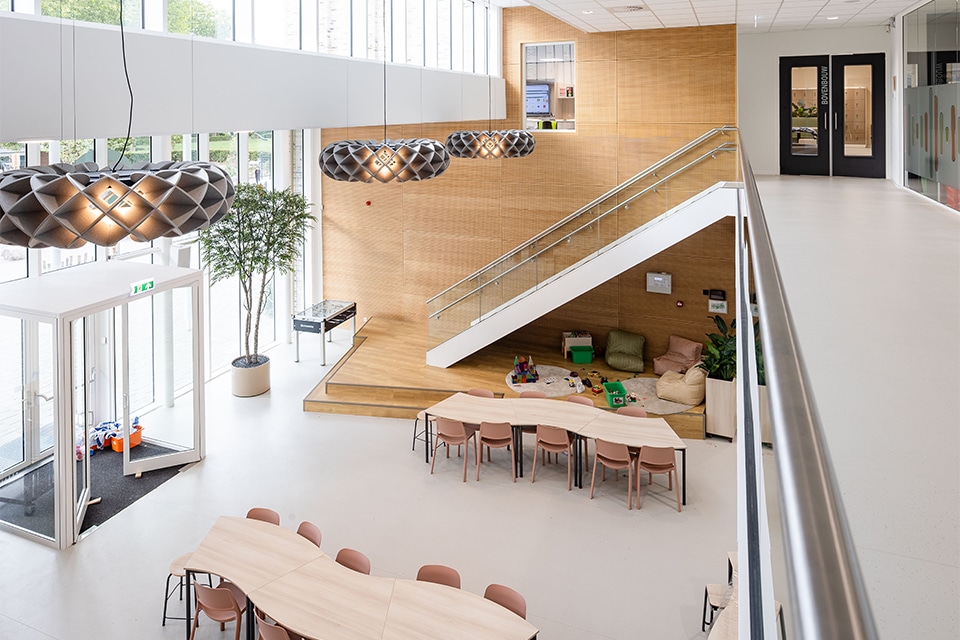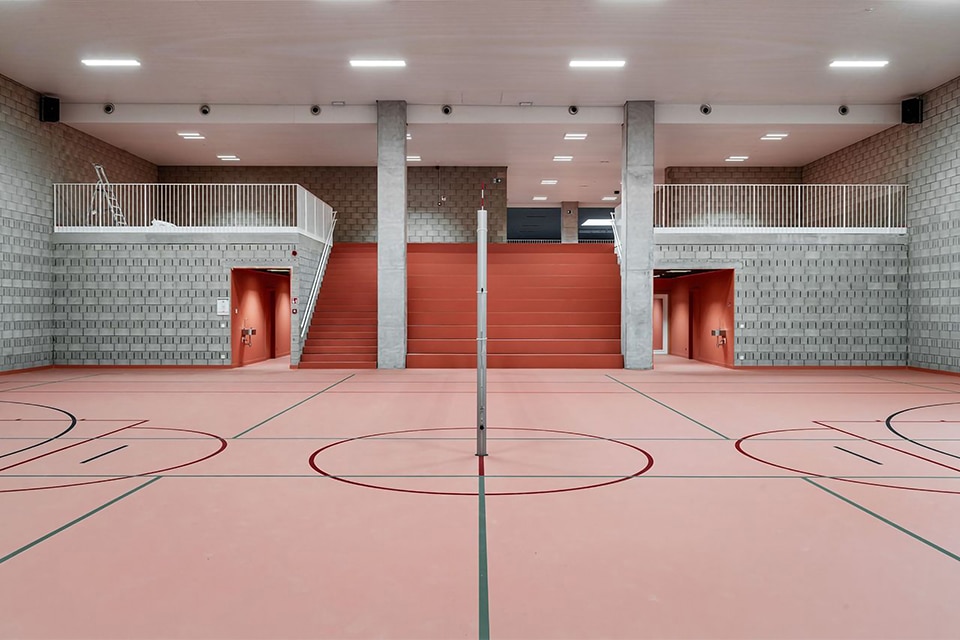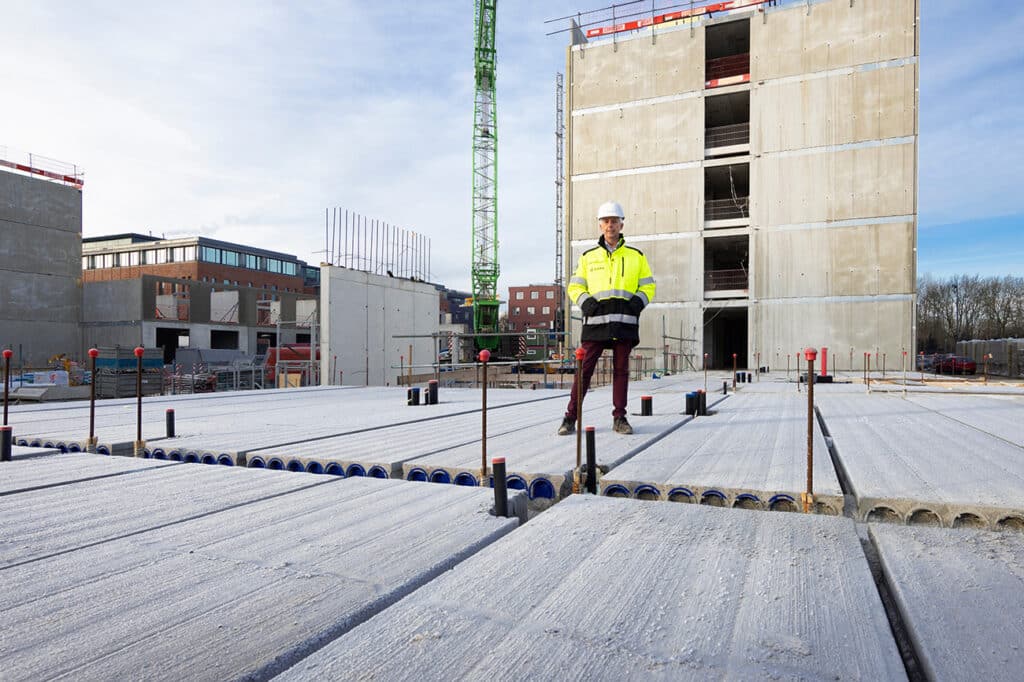
'To make truly sustainable building possible, we must dare to think outside existing boxes'
How do sustainable ways of thinking and working affect our environment? How much CO2 reduction can the use of bio-based, recycled and reusable materials produce? And how can the quality and performance of these materials also be secured in the long term? But also: what role does prefabrication play in the (further) greening of construction? To make truly sustainable building possible, we have to think outside the box. A challenge that Hurks enjoys taking up in collaboration with expert and strategic partners such as Velox.
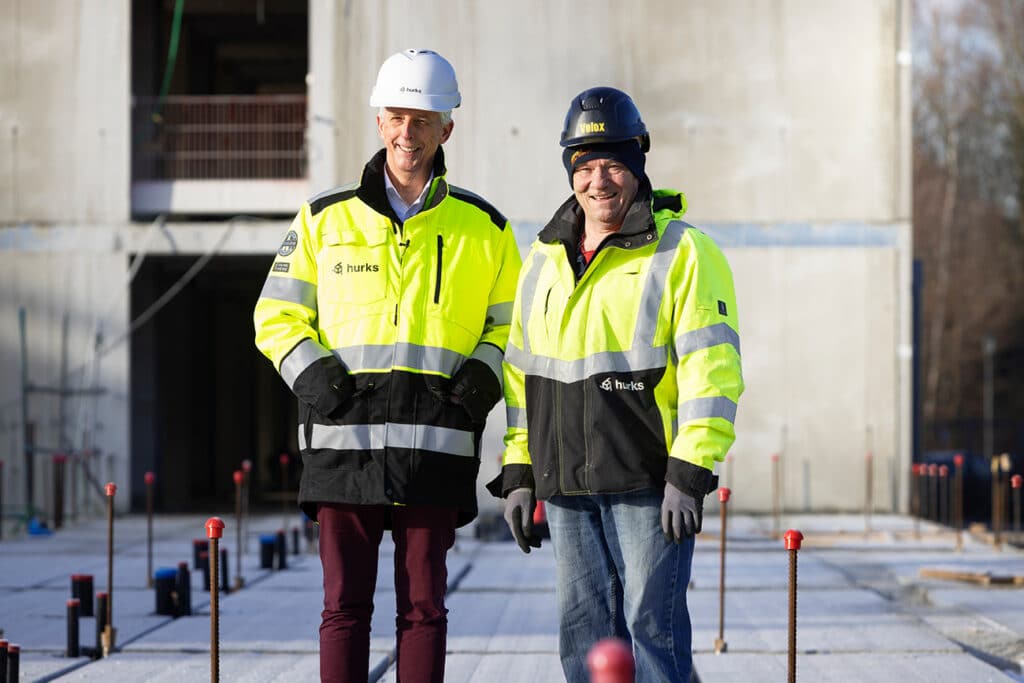
Hurks feels responsible for our current and future generations. "Whereas sustainability may or may not have previously been prescribed in specifications, it is now high on our social agenda," says Director of Construction Cees van der Meijs. "We find it important to build, develop and (re)use buildings without depleting natural resources and polluting the living environment. We have therefore consciously and widely embraced this theme, as a means for Hurks to excel. To determine our carbon footprint, our ambition is to collect all data on our CO2 emissions. Moreover, we have attracted young and skilled professionals who are intensely engaged with this subject and who want to and can make an impact. This has already led to great initiatives. Initiatives that allow us to better communicate our sustainable philosophy and be a more interesting employer for both existing and new employees."
Da Vinci Green
As an example, Van der Meijs cites the sustainable housing concept Da Vinci Green, which is designed to achieve 50% CO2 reductions compared to the standard Da Vinci concept home. "Our Da Vinci concept home was initially developed in response to market demand to develop and realize housing projects quickly and efficiently. For example, by using as many prefabricated elements and intelligent installations as possible, with maximum use of heat pumps, among other things. The Da Vinci Green home is the green further development of this. With this concept we aim high for the use of as many bio-based, recycled and reusable materials as possible. These include wood construction, green roofs, bio-based insulation materials and bio-composite cladding. A special building block library provides clear insight into the sustainable and financial impact of each material, on the basis of which clients can make conscious choices."
Tension
With Da Vinci Green, Hurks can steer on various sustainable and financial KPIs, depending on the client's ambitions. "The KPIs are clearly visible to our clients," says Van der Meijs. "They show that we go beyond a 'green label' and that we take our social responsibility very seriously." Everyone is now talking about sustainability and circularity, he emphasizes. "But at the same time, developers and clients are looking for an extremely long lifespan and forty-year warranty. They want to know exactly what an investment will yield at the bottom of the line and are quick to revert to the familiar in the event of any risks. The result is a continuous field of tension that requires guts and companies that dare to look beyond the low-hanging fruit. Fortunately, there are enough parties in the chain who are willing to think along in this, such as Caspar de Haan maintenance & renovation."
Together with Caspar de Haan, Hurks co-built a pavilion for the Floriade Expo 2022 in Almere, consisting entirely of low-CO2 and biobased materials. "Also during Dutch Design Week 2022 in Eindhoven, we showed Da Vinci Green in an exhibition by The Embassy of Circular & Biobased Building, to give the public insight into how much CO2 can already be reduced with biobased materials in a standard home." Also unique is the CASA 1.0 house by TU/e student team CASA, which consists of three extremely sustainable student apartments developed in collaboration with housing corporation Woonbedrijf and Hurks. "The knowledge and expertise we gained during these and other building initiatives are being deployed across projects and divisions to take circular building to an even higher level and to further reduce the CO2 footprint."
Knowledge exchange and innovations
"Hurks is a family business with a flat organizational structure," Van der Meijs emphasizes. "This encourages thinking along, knowledge exchange and innovations from employees. From management to executives: everyone knows where to find each other and can easily drop in on each other. That works incredibly well and makes us an attractive employer for a lot of professionals." Anno 2023 employees are looking for challenges, he knows. "This may relate to building technology, but also, for example, to the greening of construction and/or the size or complexity of the projects you are awarded as an organization." At the moment, for example, Hurks is busy with the circular demolition and new construction of 506 student homes on the Einstein Campus in Maastricht, where the knowledge and experience of the Da Vinci Green concept is being extensively used to build modularly. "Moreover, we recently started the new construction of four office buildings, a huge central plaza and two annexes for ASML in Veldhoven, for which we are developing various circular initiatives. The same applies to the large-scale transformation of campus Rachelsmolen of Fontys Hogeschool in Eindhoven."
Working with flexible teams
The three projects (Einstein Campus in Maastricht, ASML in Veldhoven and Fontys in Eindhoven) will be built by a team of our own specialists, supplemented by Velox employees. "From junior and senior work planners to subcontractors and chief executives, who are a full part of our organization and again bring in new and fresh ideas," said Van der Meijs, further explaining the choice for a flexible project team. "We have around 150 of our own employees and a very stable order book, so we don't have to keep scaling up and down personnel. So our flexible shell is more of a practical consideration. Our order book grows every year, while new staff is limited. Then it is nice - in addition to our own Personnel & Organization department - to be able to rely on a project agency that can quickly find the right people. Both for the short and long(er) term."
Carefully formed project teams
In cooperation with parties such as Velox, project teams are carefully formed so that strengths and weaknesses complement each other, he says. "Knowledge of our own and external employees is essential for this. That is why I am in constant contact with the managers, work planners and implementers. And regular discussions are also held with the (external) employees. This starts as early as the selection phase, to discover whether they share our green heart, are sufficiently driven, creative, have good communication skills and a healthy dose of humor. In short: whether they fit within our Hurks DNA." Van der Meijs likes to take the external workers who turn out to be good candidates for new projects, for which new project teams are formed in most cases. "By moving employees on, we maintain the dynamics and cross-pollination in our organization and prevent employees from becoming alienated from each other. In this way, we not only work on sustainable projects, but also on
sustainable employee relations."
Heeft u vragen over dit artikel, project of product?
Neem dan rechtstreeks contact op met Velox.
 Contact opnemen
Contact opnemen
